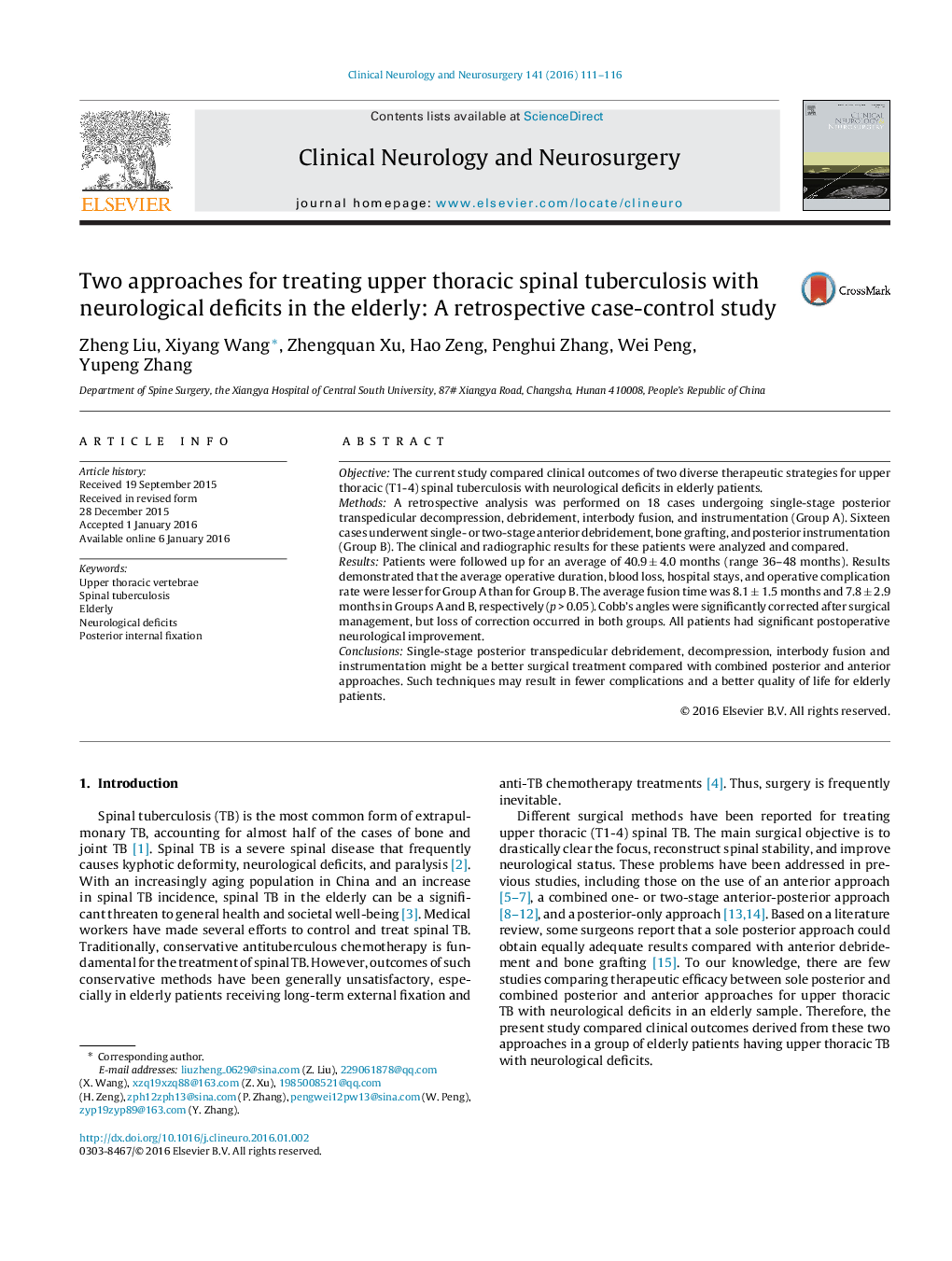| Article ID | Journal | Published Year | Pages | File Type |
|---|---|---|---|---|
| 3039586 | Clinical Neurology and Neurosurgery | 2016 | 6 Pages |
•Few studies comparing efficacy between two approaches for upper thoracic TB in the aged.•Posterior-only approach may result in fewer complications and better quality of life.•Posterior-only might be a better treatment compared with combined approaches.
ObjectiveThe current study compared clinical outcomes of two diverse therapeutic strategies for upper thoracic (T1-4) spinal tuberculosis with neurological deficits in elderly patients.MethodsA retrospective analysis was performed on 18 cases undergoing single-stage posterior transpedicular decompression, debridement, interbody fusion, and instrumentation (Group A). Sixteen cases underwent single- or two-stage anterior debridement, bone grafting, and posterior instrumentation (Group B). The clinical and radiographic results for these patients were analyzed and compared.ResultsPatients were followed up for an average of 40.9 ± 4.0 months (range 36–48 months). Results demonstrated that the average operative duration, blood loss, hospital stays, and operative complication rate were lesser for Group A than for Group B. The average fusion time was 8.1 ± 1.5 months and 7.8 ± 2.9 months in Groups A and B, respectively (p > 0.05). Cobb’s angles were significantly corrected after surgical management, but loss of correction occurred in both groups. All patients had significant postoperative neurological improvement.ConclusionsSingle-stage posterior transpedicular debridement, decompression, interbody fusion and instrumentation might be a better surgical treatment compared with combined posterior and anterior approaches. Such techniques may result in fewer complications and a better quality of life for elderly patients.
